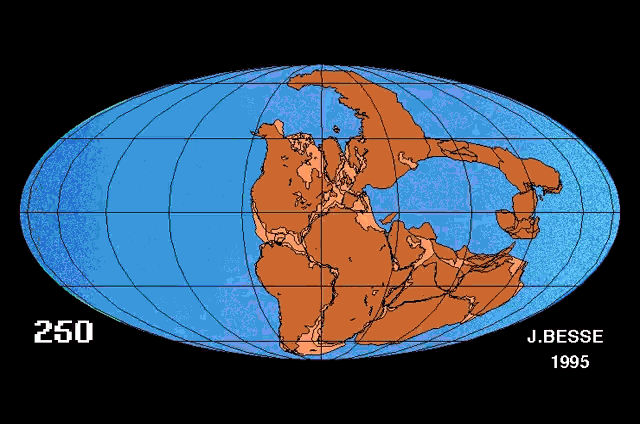 |
| History of Supercontinents Credit: https://cdn-images-1.medium.com/max/1600/1*zMHdb8IeaNiDaSJ4DO8Zug.gif |
Welcome to another post about continents. Last post, I discussed about a hidden continent, Zealandia. To want more information, click here. I had posted a post about supercontinents in my Geology science badge, for more information, click here. Let's go back to the topic. I am going to talk about two supercontinents which were on this planet.
Vaalbara between 3.6-2.8 billion years ago
The first known supercontinent is Vaalbara. There is evidence of the first cratons in South Africa and Western Australia. The crust from Vaalbara is back 3.6 to 2.8 billion years ago. Vaalbara's name comes from two cratons which were believed to be combined about 3.1 billion years ago. The first craton which now is in South Africa named Kaapvaal Craton. The second craton is the Pilbara craton which is in Pilbara, West Australia. Approximately 2.5 billion years ago the supercontinent split apart from each other. Their drift routes present additional evidence that they were once connected.
Pangaea between 0.335 - 0.173 billion years ago
Around 300 million years ago, Earth hadn't had the seven continents that we have now, but instead, there was one massive supercontinent, Pangaea. Pangaea was the most recent supercontinent. Alfred Wegener convinced that Earth's continents were once part of a supercontinent, Pangaea. Alfred trained as an astronomer, used botany, biology and geology to explain Pangaea and the continental drift. One example is fossils of the ancient reptile mesosaurus that are only found in South America and southern Africa. Mesosaurus is a reptile that is freshwater and it is just only one metre long, the reptile couldn't have swum the Atlantic Ocean.
Here is a video from Khan Academy explaining about Pangaea.
Here is another video from Marilyn Adams about the expanding earth.
I hope you like my post about supercontinents. Comment down below if you know about supercontinents. Have a cool day!! Bye!!